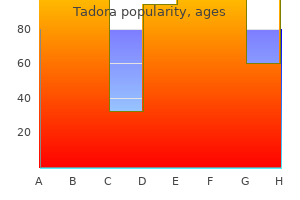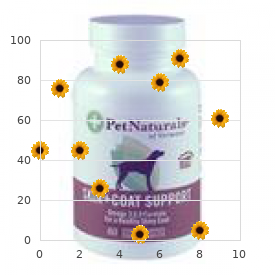


Tadora
"Order tadora 20 mg free shipping, erectile dysfunction risk factors".
J. Wenzel, M.B. B.CH. B.A.O., Ph.D.
Co-Director, Edward Via College of Osteopathic Medicine
CataCleave probe (catalytically cleavable fluorescence probe) is one instance [76] erectile dysfunction doctor in columbus ohio 20 mg tadora sale. Invader Chemistry Invader chemistry detects goal with probe-mediated sequence-specific hybridization and achieves sign amplification with probe biking and structure-specific cleavage by Cleavase enzyme [27] causes of erectile dysfunction in 60s 20 mg tadora overnight delivery. In addition to the goal binding area erectile dysfunction water pump 20 mg tadora purchase with amex, the probe is designed with an un-complementary arm (flap) 5� to the target binding area. Cleavase enzyme cleaves the probe on the overlap place and generates the flap plus one nucleotide. Huang temperature of the probe subsequently permitting probe to cycle on and off rapidly. As a outcome, cleaved probes are continuously being generated as reaction proceeds. As a outcome, Invader chemistry can generate important signal amplification in a sequence-specific method. Invader chemistry has been used in a variety of utility including genotyping, goal quantification, and duplicate quantity variation. AmpliFluor primers are labeled with fluorophore/quencher pair on the two ends of the stem-loop construction, in order that no fluorescence is generated because of efficient quenching. As a end result, power transfer or quenching effect reduces, leading to enhance in fluorescence sign. In addition, the primer needs to have G or C base around the 3�-end in order that the fluorescence is effectively quenched as a outcome of the nucleobase-dependent quenching. As a outcome, the unique stem-loop construction in the primer opens up resulting in sign generation. These above primer techniques could be designed to tolerate or discriminate mutation dependent upon the 3� end of the primer sequences. Another design is known as duplex scorpion primer [84], which is a derivative to the unique scorpion primer design described above. Instead of getting a stem as part of the stem-loop construction, the stem for the duplex scorpion primer is fashioned by two separate oligonucleotides. This method obviously requires that the reaction conditions support both the goal amplification and enzymatic reaction. It is to note that, much like any assay solely relying on primer for goal recognition, nonspecific primer amplification corresponding to false priming or primer dimer might generate nonspecific alerts. Incorporation of the quencher by way of isoc:isoG paring results in quenching of the fluorescence. Energy Transfer Between Primers or Between Primer and Probe Several methods have been described that contain vitality transfer between primer and probe each labeled with a fluorescence donor or acceptor [89, 90]. The primer is labeled either on the 5� finish or at an inside position, whereas the probe is labeled on the 3� finish. After primer extension generates the probe-binding sequence, the probe will hybridize to the extended region bringing two labels within a short distance. As a end result, power transfer can happen and fluorescence sign change could be measured. One publication additionally described a method involving energy switch between forward and reverse primers each labeled with donor and acceptor/quencher [91]. The labels are positioned at such positions within the primers that once the double-stranded amplicon is formed as the outcomes of primer extension, vitality could be efficiently transferred from the donor to acceptor or quencher. These nucleobases are included in the amplified merchandise via primer extension. In an alternate design referred to as template-directed dye-terminator incorporation, the primer is labeled with fluorescence donor [94]. As a result, incorporation of the subsequent acceptor-labeled nucleobase results in change in fluorescence sign. Each instrument supporting real-time assay and fluorescence detection has three basic technical functionalities: (1) supply excitation energy, (2) detect emission vitality, (3) control and/or cycle temperature. It is to notice that multiplex detection is achieved through the use of a number of discrete filters or channels on the emission detection as well as typically the excitation end of the instrument. It is tougher to obtain multiplex performance when there is simply one excitation spectrum with a slender wavelength vary. For multiplex detection, filter or channel-specific signals typically need to be decided via mathematical decomposition to determine the analyte-specific indicators as a end result of the usually overlapping spectrums of fluorescence dyes. It is obvious that the efficiency of real-time assays is decided by factors in assay chemistry (amplification and sign generation), instrument efficiency (optical and thermal), and the intricate interactions between assay and instrument elements. Critical assay efficiency characteristics embrace detection sensitivity, specificity, and reproducibility. Design features, functionalities, and technical capabilities of an instrument system are complex and multifaceted. Institutional adoption of a system sometimes entails comparison and consideration in numerous areas including: instrument price, bodily dimension and different facility necessities, take a look at menu/performance and regulatory status, open application functionality, assay throughput and labor burden, service and assist capability of the producer, consumer interface, and laboratory info methods. The central consideration amongst all these components has to be performance of the take a look at and instrument. The assessment of instrument methods for the purpose of assay or instrument growth are sometimes targeted on the technical design options and capabilities, corresponding to excitation and detection methods, multiplex capability, response volume, throughput, thermal management, and so forth. It is known that when designing an instrument, logistical, infrastructural, and different nontechnical elements of the whole system providing as said previously need to be comprehended and optimized for the end-use laboratories and personnel. The technical features of the principle instrument methods presently available in the commercial medical diagnostic area are summarized in Table 24. Data Analysis and Result Reporting Data analysis and result reporting are a critical and ultimate means of the diagnostic testing. The objectivity of reported results is the result of each robust knowledge analysis algorithms and sophisticated information validity criteria. Validity criteria embody checks on a quantity of aspects of the assay information, together with amplification curve, dye depth, signal/noise abnormality, cycle quantity (or time to positivity) abnormality, in addition to, relying on management and calibration strategies, numerous efficiency traits of controls and calibrators. The output of information analysis is the technology of some kinds of actionable values from which to determine assay outcomes. These actionable values could embody cycle number (or time to positivity) or sign depth. The algorithms in formulating assay results from these actionable values differ relying upon the diagnostic utilities that assay results are anticipated to fulfill. Huang to positivity) of the analyte in opposition to external calibrator(s) or internal quantitative standard(s). Similarly, relative quantification may be calculated by comparing the D cycle time (or D time to positivity) between the analyte and the endogenous management in opposition to calibrators/standards. For a qualitative assay, the positive or adverse assay outcome could additionally be determined by comparing the cycle number (or time to positivity) and/or signal depth with respective cutoff values. For a genotyping assay, qualitative outcomes from one or multiple analytes could additionally be mixed to decide the genotype profile of the sample. Conclusions Several primary topics relating to fluorescence-based detection of real-time amplification and detection assays have been discussed in this chapter, together with fluorescence ideas, goal detection/signal era technologies, real-time instrument systems, and knowledge evaluation and end result reporting. While current real-time assays are enjoying an important function in scientific microbiology, new technology platforms and instrument systems for amplification and detection in addition to pattern administration and preparation will continue to emerge. These new applied sciences maintain great guarantees in additional bettering established scientific utilities as nicely as addressing emerging scientific needs or new microbiological agents. It is subsequently crucial for the diagnostic group, including researchers, laboratories, clinicians, and system producers, to make concerted and continued effort to develop, commercialize, and make the most of extra sophisticated and accurate diagnostic tools to fight in opposition to increasing burden of diseases and infections. Nazarenko I, Pires R, Lowe B, Obaidy M, Rashtchian A (2002) Effect of major and secondary structure of oligodeoxyribonucleotides on the fluorescent properties of conjugated dyes. Lv C, Yu L, Wang J, Tang X (2010) A dumbbell molecular beacon for the specific recognition of nucleic acids. Bioorg Med Chem Lett 20:6547�6550 24 Real-Time Detection of Amplification Products. Li Q, Luan G, Guo Q, Liang J (2002) A new class of homogeneous nucleic acid probes primarily based on particular displacement hybridization. Yu G, Niu J, Shen M, Shao H, Chen L (2006) Detection of Escherichia coli O157 using equallength double-stranded fluorescence probe in a real-time polymerase chain response assay. Svanvik N, Westman G, Wang D, Kubista M (2000) Light-up probes: thiazole orange-conjugated peptide nucleic acid for detection of goal nucleic acid in homogeneous solution. Yamane A (2000) Smart probe: a novel fluorescence quenching-based oligonucleotide probe carrying a fluorophore and an intercalator. Tadokoro K, Akutsu Y, Tanaka K et al (2010) Comparative quantitative analysis of 14 forms of human papillomavirus by real-time polymerase chain reaction monitoring Invader reaction (Q-Invader assay).
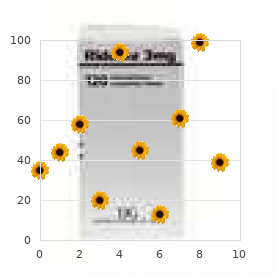
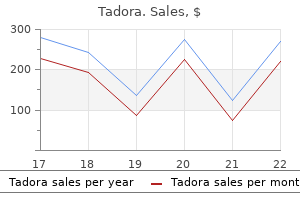
Heinz our bodies are current in the peripheral blood after splenectomy and can be detected by incubating the erythrocytes with a supravital stain similar to new methyline blue or crystal violet erectile dysfunction medscape tadora 20 mg purchase with visa. The most attribute characteristic of the unstable hemoglobins is their warmth instability which can be demonstrated by the presence of flocculent precipitates on heating a dilute hemoglobin resolution at 50�C for quarter-hour erectile dysfunction age group discount tadora 20 mg online. A similar effect can be induced by the addition of isopropanol at lower temperature impotence zantac generic 20 mg tadora amex. Some of those variants may be seen on hemoglobin electrophoresis and sometimes appears as a diffuse band, however others, as a result of they outcome from a neutral amino acid substitution, produce no electrophoretic adjustments. General supportive measures embody folic acid dietary supplements, prompt remedy of an infection and discount of fever. Intermittent transfusions could additionally be wanted, corresponding to throughout an aplastic crisis or if hemolysis could be very severe. In instances with very severe hemolysis, splenectomy could also be beneficial although experience is proscribed. Unstable hemoglobin issues Structural adjustments in the globin subunits can lead to instability of the hemoglobin molecule inflicting it to precipitate intracellularly, detectable by supravital staining as globular aggregates known as Heinz bodies. Hemolysis is extremely variable in depth and infrequently precipitated by infections and exposure to chemical oxidants. Thus mutations that lead to a structural alteration which impacts the equilibrium between the R and T states would have a marked effect on hemoglobin binding of oxygen. Mutations for prime oxygen affinity variants have been described only within the heterozygous type with the exception of one chain variant, Hb Tarrent (126 AspAsn) by which, on the premise of the Hb electrophoresis quantitation, two of the 4 -globin genes have been affected. The elevated oxygen affinity causes a functional anemia and tissue hypoxia, which in turn leads to elevated output of erythropoietin and an elevated pink cell mass. High affinity hemoglobin variants observe an autosomal dominant inheritance sample; all affected individuals are heterozygotes. Most affected individuals are completely healthy and recognized by way of a routine blood depend which exhibits increased hemoglobin or hematocrit. As these sufferers require a excessive hemoglobin level for oxygen transport, venesection should be carried out with nice caution. Venesection is undertaken because of increased risk of vascular complications, and sometimes the purpose is to maintain the hematocrit under 0. Far fewer hemoglobin variants with low oxygen affinity have been described however should always be considered in any patient with unexplained congenital cyanosis, the differential prognosis being methemoglobinemia. Cyanosis is present from delivery in some carriers of -globin variants, whereas cyanosis associated with the -globin variants presents within the second half of the primary yr of life when -globin gene expression predominates. Diagnosis of a low oxygen affinity hemoglobin is made by excluding different causes of cyanosis, especially cardiopulmonary, and differentiation of the cyanosis from that of methemoglobinemia. In contrast, in the blood of sufferers with methemoglobinemia, M hemoglobins and sulfhemoglobinemia retain their abnormal shade regardless of exposure to pure oxygen. A much rarer explanation for methemoglobinemia is the presence of one of many M hemoglobins. Affected people current with cyanosis that varies from brownish to slate grey but are otherwise asymptomatic. Seven M hemoglobins have been described, of which two affect the -, three the -, and two, the -globin subunit. Six of the seven subunits have substitutions of tyrosine for the proximal (F8) or distal (E7) histidine, creating an irregular microenvironment for stabilization of the heme iron within the ferric kind. As a results of these substitutions, these Hbs M are resistant to discount by methemoglobin reductase. Hb electrophoresis is of restricted worth until the whole hemolysate is converted to methemoglobin prior to electrophoresis. The molecular abnormalities are remarkably heterogeneous and consists of single amino acid mutations inflicting hemoglobin variants such as Hbs E and Knossos with irregular splicing, amino acid deletions, elongated or truncated globin chains and fusion globins such as Hb Lepore (Table 9. Some of the -globin mutants are invariably linked to a tandem -globin gene deletion and therefore the concomitant deficiency, for example HbG-Philadelphia (/-G-Phil). Next in the differential analysis are the methemoglobinemias or sulfhemoglobinemias, often brought on by a deficiency of the enzyme cytochrome b5 reductase. Looping and interaction between hypersensitive websites in the active beta-globin locus. Control of globin gene expression during improvement and erythroid differentiation. A collection of circumstances of splenomegaly in children with anemia and peculiar bone modifications. Full-length human L1 insertions retain the capacity for prime frequency retrotransposition in cultured cells. Somatic deletion of the traditional beta-globin gene resulting in thalassaemia intermedia in heterozygous betathalassaemic sufferers. Beta-thalassemia main evolution from beta-thalassemia minor is related to paternal uniparental isodisomy of chromosome 11p15. Beta thalassemia intermedia: is it possible to constantly predict phenotype from genotype Genetic evaluation of -thalassaemia intermedia in Israel: range of mechanisms and unpredictability of phenotype. Bone marrow transplantation in adults with thalassemia: treatment and long-term follow-up. The molecular basis of thalassemia, thalassemia, and hereditary persistence of fetal hemoglobin. Mortality in sickle cell illness: life expectancy and danger elements for early death. Genetic variation on chromosome 6 influences F cell levels in healthy people of African descent and HbF ranges in sickle cell sufferers. Heterogeneity of the epsilon gamma delta beta-thalassaemias: characterisation of three novel English deletions. A novel deletion causing alpha thalassemia clarifies the importance of the main human alpha globin regulatory component. A genome-wide affiliation identified the common genetic variants influence disease severity in beta(0)thalassemia/hemoglobin E. The triplicated alpha-globin gene locus in beta-thalassaemia heterozygotes: medical, haematological, biosynthetic and molecular research. Different hematological phenotypes brought on by the interaction of triplicated alpha-globin genes and heterozygous beta-thalassemia. Segmental duplications involving the alpha-globin gene cluster are causing beta-thalassemia intermedia phenotypes in beta-thalassemia heterozygous patients. Association of alpha globin gene quadruplication and heterozygous beta thalassemia in sufferers with thalassemia intermedia. A genome-wide meta-analysis identifies 22 loci related to eight hematological parameters in the HaemGen consortium. Clinical options and molecular evaluation of the alpha-thalassemia/mental retardation syndromes. Genetic modulation of sickle cell illness, in Renaissance of sickle cell illness analysis within the genome period, B. Stroke in sickle cell disease: demographic, clinical, and therapeutic considerations. Prevention of a first stroke by transfusions in kids with sickle cell anemia and irregular results on transcranial doppler ultrasonography. Effect of hydroxyurea on mortality and morbidity in adult sickle cell anemia: risks and benefits as a lot as 9 years of therapy. Fetal hemoglobin in sickle cell anemia: genetic determinants of response to hydroxyurea. National Institutes of Health Consensus Development Conference statement: hydroxyurea therapy for sickle cell illness. Systematic evaluation: hydroxyurea for the remedy of adults with sickle cell disease. Hydroxyurea for sickle cell illness: a systematic review for efficacy and toxicity in youngsters. Heterozygosity and homozygosity for the excessive oxygen affinity hemoglobin Tarrant or alpha 126 (H9) Asp replaced by Asn in two Mexican households.
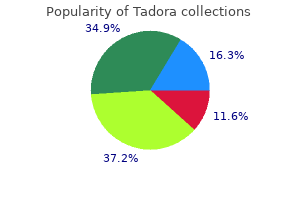
Such an assay is a useful gizmo for the genetic detection of various pestiviruses in cattle erectile dysfunction drugs cialis tadora 20 mg with visa. This blocking microsphere-based immunoassay had intra- and inter-assay variability of four purchase erectile dysfunction drugs tadora 20 mg buy visa. This novel multiplex assay not only permits a better sample throughput but additionally reduces the time and labour required impotence meme tadora 20 mg effective. While the cycle sequencing continues to be the method of alternative in most laboratories, next-generation sequencing is changing into obtainable in some laboratories. Furthermore, genome sequencing will contribute considerably to a greater understanding of pathogens, which would be useful in veterinary diagnostic virology. Particularly, viral metagenomics is a generic know-how utilizing large-scale sequencing to identify viral genome sequences without prior knowledge. Viral metagenomics has helped researchers with the investigation of advanced ailments, ailments of unknown aetiology, and identification of emerging novel viruses in samples. Liu parvovirus-like agent, termed as porcine boca-like virus in the lymph nodes from the diseased pigs. The illness was first noticed in farmed mink kits in Denmark in 2000 and subsequently in Sweden, Denmark and Finland in 2001, and in Denmark once more in 2002 [37]. Analysis of the 454 sequencing knowledge revealed eight sequence fragments much like mink astrovirus. Based on the end result, new primers were designed so as to determine the nucleotide sequences of the entire viral genome. As the virus was not detected in wholesome mink kits, we suppose an association between the astrovirus and the neurological illness of mink. Genetic Characterization of Novel Bovine Pestiviruses in Biological Products, Such as Foetal Bovine Serum Genome sequencing and subsequent phylogenetic evaluation have been thought of as important tools for the precise identification of the "unknown" or rising new pathogens. Phylogenetic analysis of three genetic areas confirmed three different 36 Recent Advances in Veterinary Diagnostic Virology. To unequivocally solve the connection, the pestivirus pressure Th/04 KhonKaen was recovered from a serum sample of a naturally infected calf and the complete genome sequence was determined [39]. Many of these novel assays offered highly effective novel tools for the improved detection of viruses in veterinary and human medical virology. A big selection of the novel molecular diagnostic strategies has been internationally in contrast in ring tests and validated. In order to illustrate this pattern of growth, several examples are summarized on this chapter. For molecular strategies, upstream nucleic acid extraction is crucial for the success of the downstream diagnostic checks. In parallel, highthroughput suspension microarray applied sciences enable the simultaneous detection and identification of a quantity of pathogens in single test platforms. The liquid-phase microarray platforms, corresponding to Luminex panels, are accelerating the detection of emerging animal viruses and zoonotic, in particular, the water- and foodborne pathogens. Proximity ligation assay has emerged as a novel technique for the highly delicate and particular detection of the viral proteins. Viral metagenomics and large-scale genome sequencing establish highly effective instruments for the detection of "unknown" viruses, as well for the identification of emerging and re-emerging pathogens. These novel approaches strongly help the investigation of illness complexes and/or rising novel illness eventualities in veterinary diagnostic virology, with regard to illnesses in home animals and in wildlife, with particular regard to zoonotic infections, by following the rules of "One World One Health. This is a consultant consensus tree: mid-point rooted (left) displaying all sampled pestiviruses and their relationships, and unrooted (right). The numbers at a node are posterior probability (left) and proportion of 1,000 bootstrapping replicates (right). A "*" indicates strong statistical assist for a node by a posterior likelihood value of zero. The arrows show the possible placements of the root for the given unrooted community. Bel�k S, Thor�n P (2008) Validation and high quality control of polymerase chain strategies used for the diagnosis of infectious ailments. Bel�k S, Thor�n P, LeBlanc N, Viljoen G (2009) Advances in viral illness diagnostic and molecular epidemiological strategies. Reimann I, Depner K, Trapp S, Beer M (2004) An avirulent chimeric pestivirus with altered cell tropism protects pigs against deadly an infection with classical swine fever virus. Liu L, Xia H, Everett H et al (2011) A generic real-time TaqMan assay for particular detection of lapinized Chinese vaccines towards classical swine fever. Schirrmeier H, Strebelow G, Depner K, Hoffmann B, Beer M (2004) Genetic and antigenic characterization of an atypical pestivirus isolate, a putative member of a novel pestivirus species. Muradrasoli S, B�lint A, Wahlgren J et al (2010) Prevalence and phylogenetic relationship of coronaviruses in wild birds from the Bering Strait Area (Beringia). Wid�n F, Sundqvist L, Matyi-Toth A et al (2011) Molecular epidemiology of hepatitis E virus in humans, pigs and wild boars in Sweden. Schlingemann J, Leijon M, Yacoub A et al (2010) Novel means of viral antigen identification: improved detection of avian influenza viruses by proximity ligation. Xia H, Liu L, Nordengrahn A et al (2010) A microsphere-based immunoassay for speedy and sensitive detection of bovine viral diarrhoea virus antibodies. Liu L, Kampa J, Bel�k S, Baule C (2009) Virus restoration and full-length sequence evaluation of atypical bovine pestivirus Th/04 KhonKaen. Liu L, Xia H, Wahlberg N, Bel�k S, Baule C (2009) Phylogeny, classification and evolutionary insights into pestiviruses. Several sequencing platforms can be found out there and lots of extra are being developed at various stages [1]. Wang (*) Stanford Genome Technology Center, Department of Biochemistry, Stanford University, 855 S. The Illumina expertise uses solid-phase amplification to obtain clonal amplification of sequencing templates on the surface of a glass slide where highdensity ahead and reverse primers are covalently attached [3]. The Illumina HiSeq makes use of the cyclic reversible termination technique, which contains nucleotide incorporation, fluorescence imaging, and cleavage steps. An imaging step follows each nucleotide incorporation step to capture the included nucleotide at each cluster. The availability of genotypic data on the viral drug targets allows medical doctors to regulate remedy regiment and to choose a model new potent drug mixture after failure of antiviral remedy. Due to an related replication or aggressive disadvantage compared to the wild-type virus, newly emerged drugresistant clone only represents a small proportion of the total viral load. Traditional Sanger sequencing is insensitive for minor alleles in a heterogeneous mixture of mutant and wild-type sequences with detection limit about 10 %. According to Poisson distribution, it must sequence about 300 clones to detect mutants at 1 % frequency with 95 % confidence. The labor-intensive feature of this approach limits its usage in tutorial analysis settings. However, these sequencing reads are noisier with errors than these generated by Sanger sequencing. The Illumina sequencers have extra substitution-type miscalls than indel-type miscalls, while the Roche/454 sequencers have extra indel-type miscalls than substitution-type miscalls. The insertion/ deletion of one or two bases change the frame of coding region, which is lethal to viruses. Substitution miscalls resemble with actual mutations in lots of aspects and extra subtle statistical procedures are needed to identify them. From those factors, it seems that Roche/454 sequencer is extra suitable for uncommon mutation detection than the Illumina one in the meantime. The following sections describe the info evaluation procedures for detecting low-level viral drugresistant mutants with the Roche/454 approach. Analyze Pyrosequencing Data for Detecting Low-Level Variants Map Pyrosequencing Reads onto Reference Sequences the output from the Roche/454 sequencing platform includes a quality score for each position in a learn. Quality rating within the Roche/454 sequencing platform is originally designed to measure the confidence that the homopolymer size at that position is appropriate [2]; however, we found that the quality score of a place can also be an excellent measurement of confidence that the right base is identified as at any position, as with a standard Phred score [6]. The Phred-equivalent high quality value (q) is given by the log-transformed chance p of the bottom name being incorrect in accordance with the equation q = -10 � log10 p.
Tadora 20 mg order without prescription. Where does gold come from? - David Lunney.
